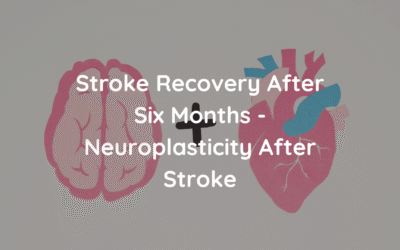Discover essential tips for caregivers to reduce daily burden while supporting stroke survivors. Learn how social support and self-care can enhance stroke recovery of the loved one.
Supporting Stroke Survivors: Practical Strategies for Caregivers
Caring for a stroke survivor can be a daunting task. Life after a stroke affects not only the survivor but also their close ones, influencing their physical and mental well-being. The degree of dependency on caregivers for daily tasks significantly impacts the caregivers’ own health. From small daily tasks to crucial activities, stroke survivors require support and care from their relatives. The long-term, vital support throughout the recovery journey is essential for survivors to regain their independence and dexterity.
However, while focusing on their loved ones’ recovery, caregivers often neglect their own needs, leading to increased stress and burnout. This blog post aims to share practical strategies to help caregivers manage their responsibilities effectively, providing a supportive environment for stroke survivors.
Understanding Caregiver Burden – Physical and Psychological Impact
Life after a stroke comes with many changes and challenges for the survivor. It is equally important to consider how life after a stroke impacts the mental health of the caregiver. The sudden onset of disabilities and the chronic nature of stroke recovery place a significant burden on caregivers’ shoulders. Caring for a patient at home is a stressful event, impacting the caregivers’ physical and mental health, quality of life, and social interactions.
Caring for a stroke survivor involves significant physical, emotional, and financial challenges. Studies show that caregiving for a stroke survivor averages around 35 hours per week and significantly influences mental health. This can lead to stress, depression, lower quality of life, and increased anxiety. While helping a stroke survivor might be gratifying, it can also be harmful to the caregiver’s health and well-being.
Alongside these mental challenges, physical difficulties also arise from the effort required during daily assistance. The physical demands of assisting stroke survivors in daily activities exacerbate caregivers’ fatigue and discomfort. Understanding how to provide the best possible support for survivors and their caregivers is crucial.
Enhancing Recovery through Social Support
As discussed in our previous blog post, social support plays a critical role in the recovery process of stroke survivors. For caregivers, leveraging social support can help reduce the sense of isolation and share caregiving responsibilities. Building a network within the stroke survivor community can be beneficial for both survivors and caregivers.
Connecting with family and friends, joining support groups, and engaging with other caregivers can help share experiences and gain insights. This can provide the needed mental support to maintain overall well-being, crucial for effective daily help and support.
Adjusting to Changes During Recovery – Embracing Flexibility
An important aspect for caregivers, especially at the beginning of their journey, is the ability to adjust to changes during the recovery of their loved one. Embracing flexibility and adapting to changes is essential. This includes creating a recovery-friendly home environment that ensures safe and efficient rehabilitation and developing skills and knowledge on rehabilitation techniques, practices, and exercises.
If necessary, seeking professional help is crucial to ensure the best possible recovery and loving environment for both the survivor and the caregiver. The rising number of stroke occurrences leads to increased home rehabilitation with loved ones’ assistance. It is vital to consider the caregiver’s comfort to create an efficient and healing home environment for the survivor.
Practical Strategies for Caregivers
Ask for Help: Do not hesitate to connect with family and friends. Sharing responsibilities and daily tasks can significantly reduce the burden.
Join Support Groups: Engaging with other caregivers can provide common experiences and insights. This helps understand the recovery process and offers mental support.
Create a Safe Home Environment: Ensure the home is recovery-friendly, with necessary modifications to facilitate safe and efficient rehabilitation.
Educate Yourself: Develop skills and knowledge on rehabilitation techniques and practices. Understanding these can help in providing better care and support.
Seek Professional Help: If necessary, consult professionals to ensure the best recovery process. Professional guidance can provide the needed expertise for both the survivor and caregiver.
Prioritize Self-Care: Caregivers should not neglect their own health. Regular check-ups, proper nutrition, and sufficient rest are crucial for maintaining overall well-being.
By following these strategies, caregivers can effectively manage their responsibilities while ensuring a supportive environment for stroke survivors. The Madglove team is committed to providing solutions and support to caregivers and survivors, helping them navigate the recovery journey together.
Conclusion
Supporting a stroke survivor is a challenging yet rewarding task. By understanding the caregiver burden and implementing practical strategies, caregivers can provide better care while maintaining their own well-being. The Madglove rehabilitation gloves are designed to aid in this process, helping survivors regain their hand dexterity and independence. Together, we can create a supportive and healing environment for everyone involved.





